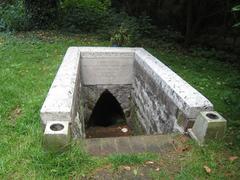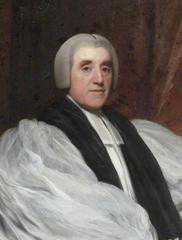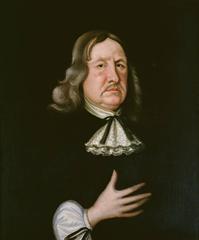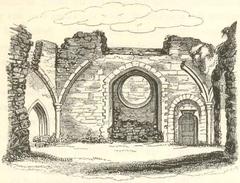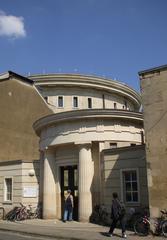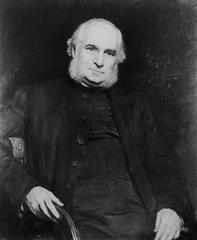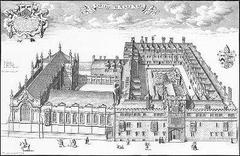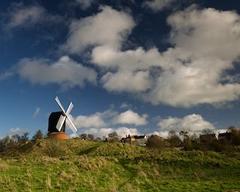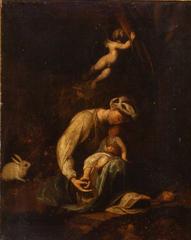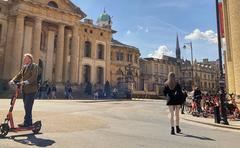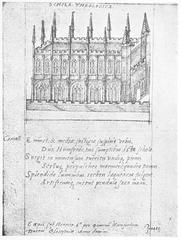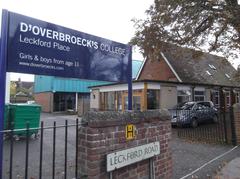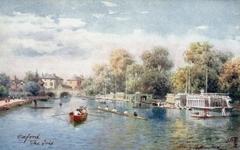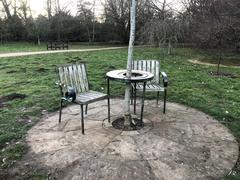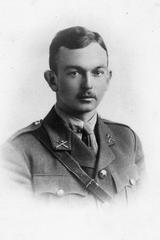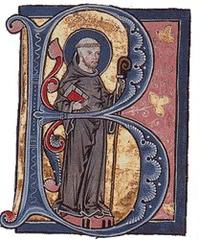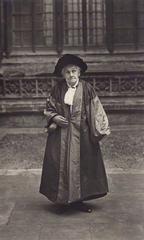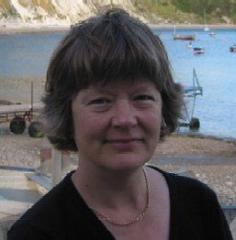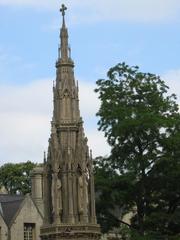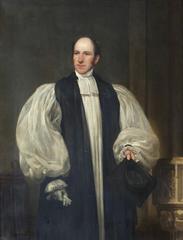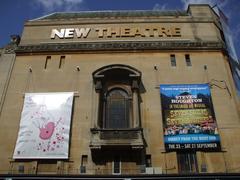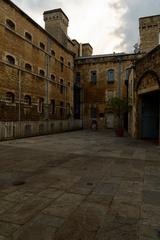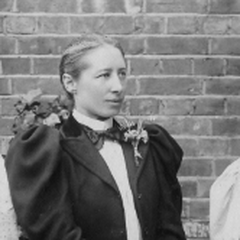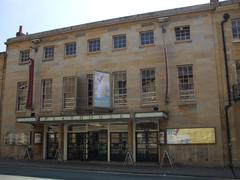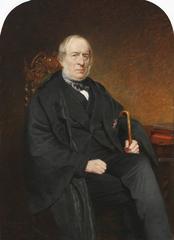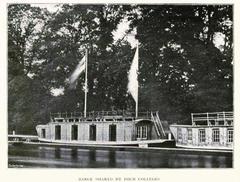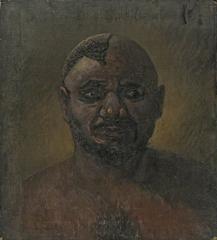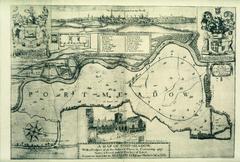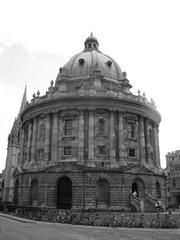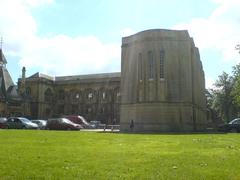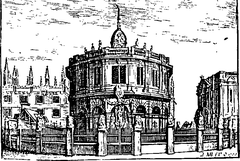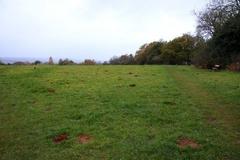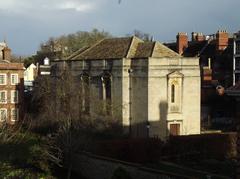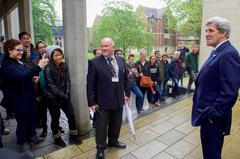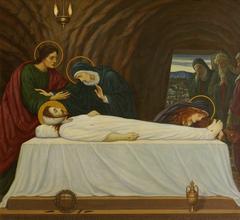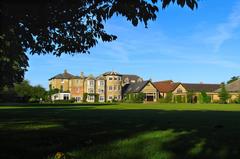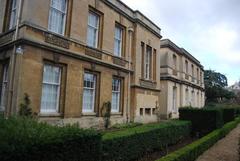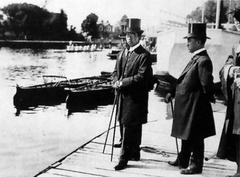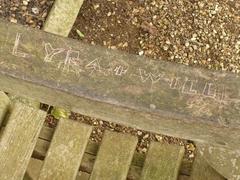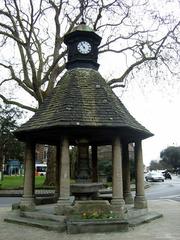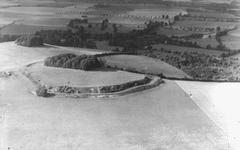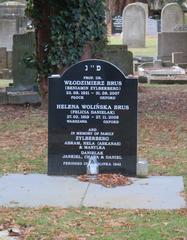
St Margaret’s Well, Oxford: Complete Visiting Guide, History, and Cultural Insights
Date: 14/06/2025
Introduction
St Margaret’s Well in Binsey, just northwest of Oxford city centre, is a remarkable site where medieval legend, spiritual heritage, and literary fame converge. Renowned for its healing waters and ties to Oxford’s patron saint, St Frideswide, the well remains a tranquil destination for pilgrims, history enthusiasts, and literary fans. This comprehensive guide details the well’s origins and significance, practical visitor information, accessibility, nearby attractions, local rituals, and cultural legacy.
Table of Contents
- Overview and Historical Significance
- Architectural and Religious Context
- Pilgrimage, Healing Traditions, and Literary Heritage
- Modern Era: Restoration and Preservation
- Visiting St Margaret’s Well: Practical Information
- Rituals, Customs, and Community Events
- FAQs
- Summary and Visitor Recommendations
- References and External Links
Overview and Historical Significance
St Margaret’s Well is steeped in legend and venerable tradition. Its origins are intertwined with St Frideswide, Oxford’s patron saint, who, according to 7th- and 8th-century legend, fled to Binsey to escape the advances of Prince Algar of Mercia. As the story goes, Algar was struck blind but had his sight miraculously restored after St Frideswide’s prayer caused a healing spring to emerge at Binsey (Atlas Obscura; Oxford History; Britain Express).
The well quickly became an important medieval pilgrimage site, especially for those seeking cures for eye ailments. Its reputation was so widespread that tokens left by healed pilgrims have been documented in medieval manuscripts, and the site was supported by St Frideswide’s Priory (Ancient Origins).
Architectural and Religious Context
The well is named for the neighbouring Church of St Margaret of Antioch, a Grade I listed Norman building dating from the 12th century (Wikipedia). The well itself is Grade II listed and preserved within a simple stone enclosure, restored by Victorian vicar Thomas Prout in 1874 (Atlas Obscura; Oxford Inscriptions). Today, both the church and well are owned by Christ Church, Oxford, who continue to maintain their historical character (Wikipedia).
Pilgrimage, Healing Traditions, and Literary Heritage
Throughout the Middle Ages, pilgrims travelled to Binsey seeking healing from the well’s waters. Its fame extended across England, and even royalty are said to have visited. The well’s medieval reputation as a source of miraculous cures is immortalized in literature: Lewis Carroll, a frequent visitor to Binsey, drew inspiration from the “treacle well” in Alice’s Adventures in Wonderland, using “treacle” in its old sense of a healing balm (theoxfordsausage.com; Wikipedia).
The adjacent church, dedicated to St Margaret of Antioch—a saint also associated with miraculous protection—hosts annual services and maintains traditions that connect the site’s living spiritual heritage to its medieval past (Britain Express). The well itself remains a symbol of healing and reflection, attracting visitors seeking solace and connection to centuries-old customs (Dark Oxfordshire).
Modern Era: Restoration and Preservation
Following the Reformation, the well fell into neglect, but its significance was rekindled in the 19th century when Rev. Thomas Prout, of Christ Church, led a restoration project. A plaque above the well records this Victorian revival. Today, the well and church are open to the public, and local conservation efforts ensure their continued preservation (Oxford Inscriptions).
Visiting St Margaret’s Well: Practical Information
Visiting Hours and Admission
- Well and Grounds: Open daily during daylight hours (recommended 9:00 AM–5:00 PM); occasionally closed during private events or special services.
- Church: Open for services and special events; check the official website for details.
- Admission: Free of charge; donations welcome for maintenance (stmargaretsoxford.org).
Accessibility
- The well is accessed via a short, level walk from Binsey village, but paths may be uneven or muddy after rain.
- Steps lead down to the well, potentially limiting access for wheelchair users; visitors with mobility concerns should contact the church in advance for guidance.
- The church provides some limited accessibility features; call ahead for assistance (stmargaretsoxford.org).
Directions and Travel Tips
- By Foot/Bicycle: Enjoy a scenic walk or ride through Port Meadow; the route from Oxford city centre takes about 40 minutes.
- By Public Transport: Buses from Oxford city centre run toward Binsey; check current timetables.
- By Car: Limited parking is available in Binsey, but walking or cycling is recommended due to narrow lanes and limited space (visitbritain.com).
- Best Time to Visit: Late spring through early autumn (May–September) offers the most pleasant weather and coincides with special services and community events (globalhighlights.com).
Facilities and Nearby Attractions
- Facilities: No public toilets on site; the nearby Perch Inn offers refreshments and restrooms (The Perch).
- Nearby Sites:
- Port Meadow: Expansive green space ideal for walking and birdwatching (Port Meadow).
- Godstow Abbey: Historic ruins a short distance away.
- Oxford City Centre: Museums, colleges, and the Bodleian Library are easily accessible (visitbritain.com).
Rituals, Customs, and Community Events
Pilgrimage and Prayer
St Margaret’s Well remains a site of pilgrimage, particularly on St Frideswide’s Day (October 19). Pilgrims and visitors often pause for reflection or prayer, sometimes leaving biodegradable ribbons or floral tokens at the well—a modern echo of medieval votive offerings (Oxford City Council). Annual blessings and community services are held, especially in summer, where water from the well is used symbolically in religious ceremonies (Oxford History).
Community Life
The church remains active, with regular services and community events. For service times and events, see the official website.
FAQs
What are the visiting hours?
The well and grounds are accessible during daylight hours; the church is usually open for services and events.
Is there an admission fee?
No, entry is free. Donations are appreciated.
Is the site accessible for wheelchairs?
Paths are uneven and there are steps at the well, so access is limited. Contact the church in advance for details.
Can I drink the water from the well?
No, the water is untreated and not suitable for drinking.
Are guided tours available?
Occasional tours are offered by local heritage organizations and the British Pilgrimage Trust (British Pilgrimage Trust).
Where can I find amenities?
The Perch Inn offers food, drink, and restrooms a short walk away.
What’s the best way to get there?
Walking or cycling from Oxford via Port Meadow is recommended.
Summary and Visitor Recommendations
St Margaret’s Well offers a rare combination of historical depth, spiritual resonance, and literary charm. Its serene setting, storied past, and ongoing community life make it a rewarding destination year-round. Visitors are encouraged to respect the site’s tranquility, participate in local customs if they wish, and explore other nearby historic sites to enhance their experience (British Pilgrimage Trust; Oxford History; theoxfordsausage.com).
For up-to-date information, events, and guided tours, download the Audiala app or visit official Oxford tourism resources.
References and External Links
- Atlas Obscura: St Margaret’s Well, Binsey
- Dark Oxfordshire: St Margaret’s Well
- British Pilgrimage Trust: St Margaret’s Well and Church
- Britain Express: Binsey Church and Well
- Oxford History: St Margaret’s Well
- The Oxford Sausage: A Treacle Well? There’s No Such Thing!
- Wikipedia: Binsey, Oxfordshire
- Oxford City Council: St Margaret’s Well
- Oxford Inscriptions: St Margaret’s Well
- Port Meadow, Oxford
- St Margaret’s Church, Binsey
- The Perch Inn
- Visit Britain: Oxford
- Global Highlights: Weather in June
Suggested Visuals:
 Alt text: Stone enclosure of St Margaret’s Well beside the Church of St Margaret of Antioch in Binsey, Oxfordshire
Alt text: Stone enclosure of St Margaret’s Well beside the Church of St Margaret of Antioch in Binsey, Oxfordshire- Map of Binsey and walking route from Oxford city centre
- Photos of ribbon-tying rituals and the peaceful churchyard
Internal Links:
